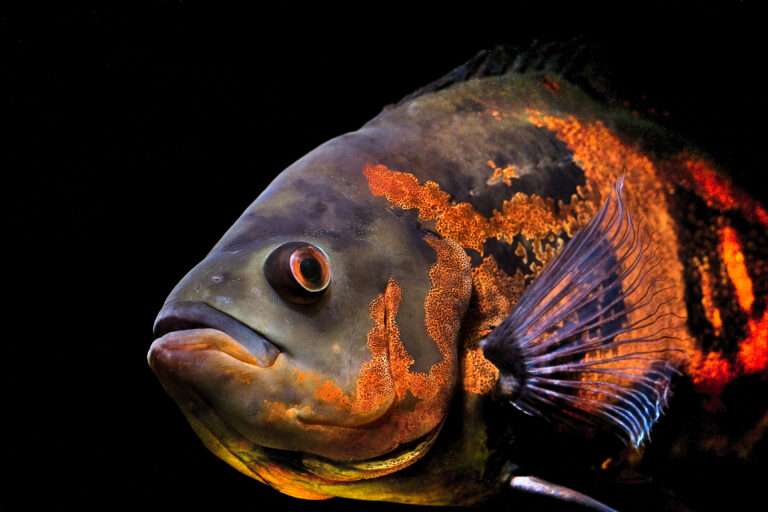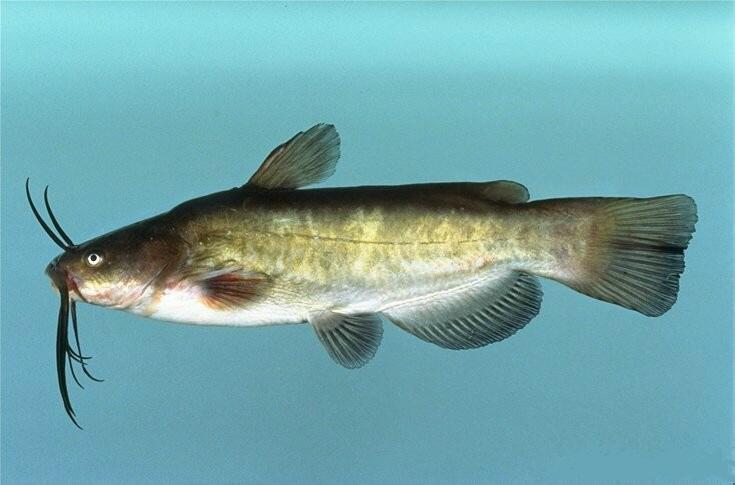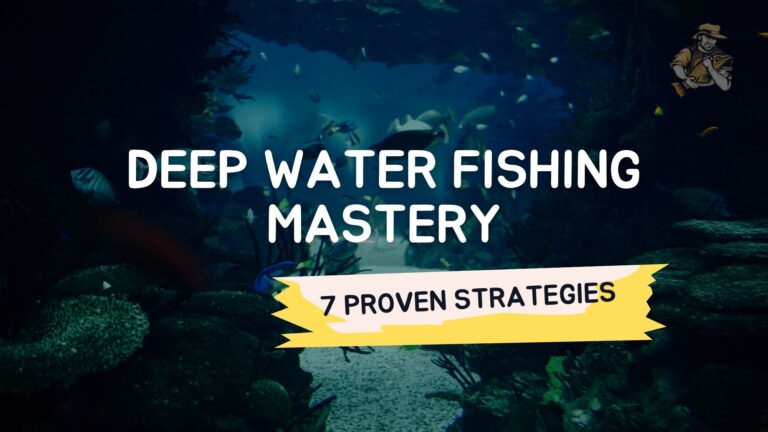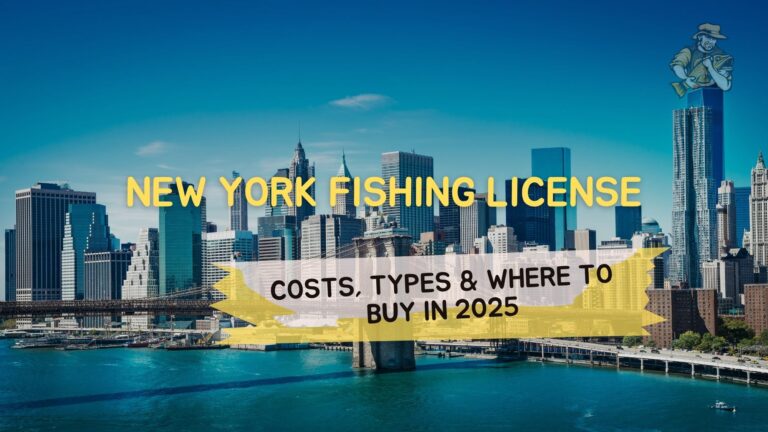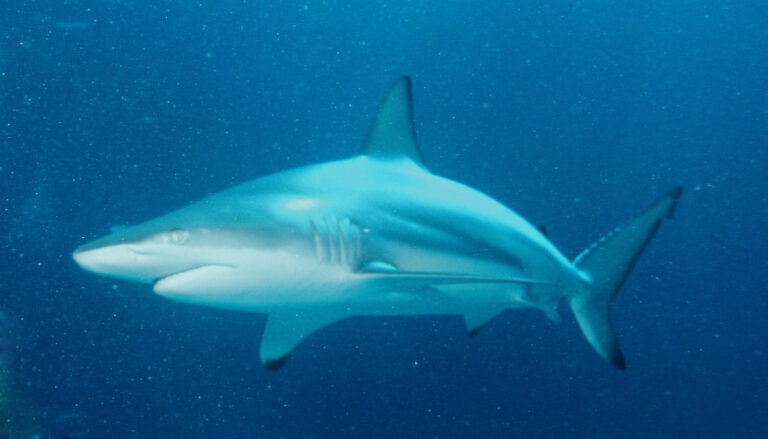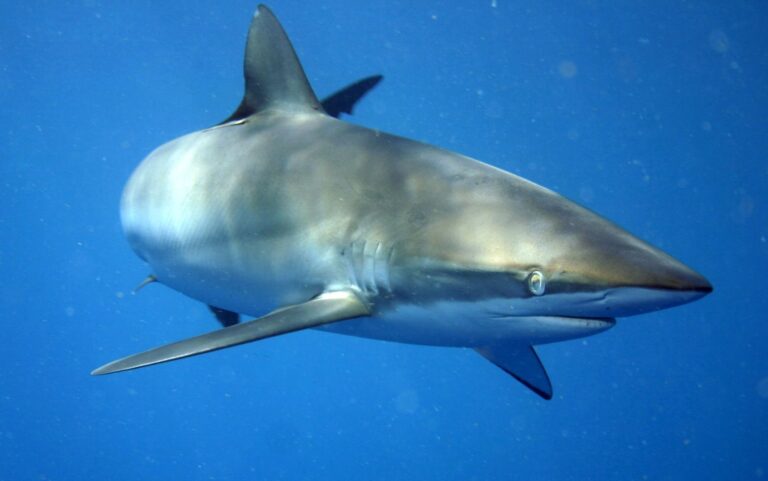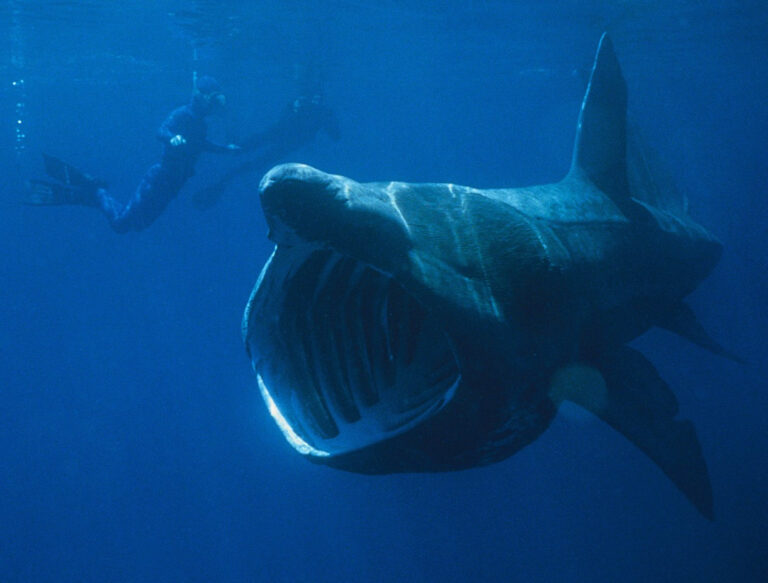Crappie Fishing Guide for Beginners | 2025
By Adam Hawthorne | Last Modified: June 4, 2025
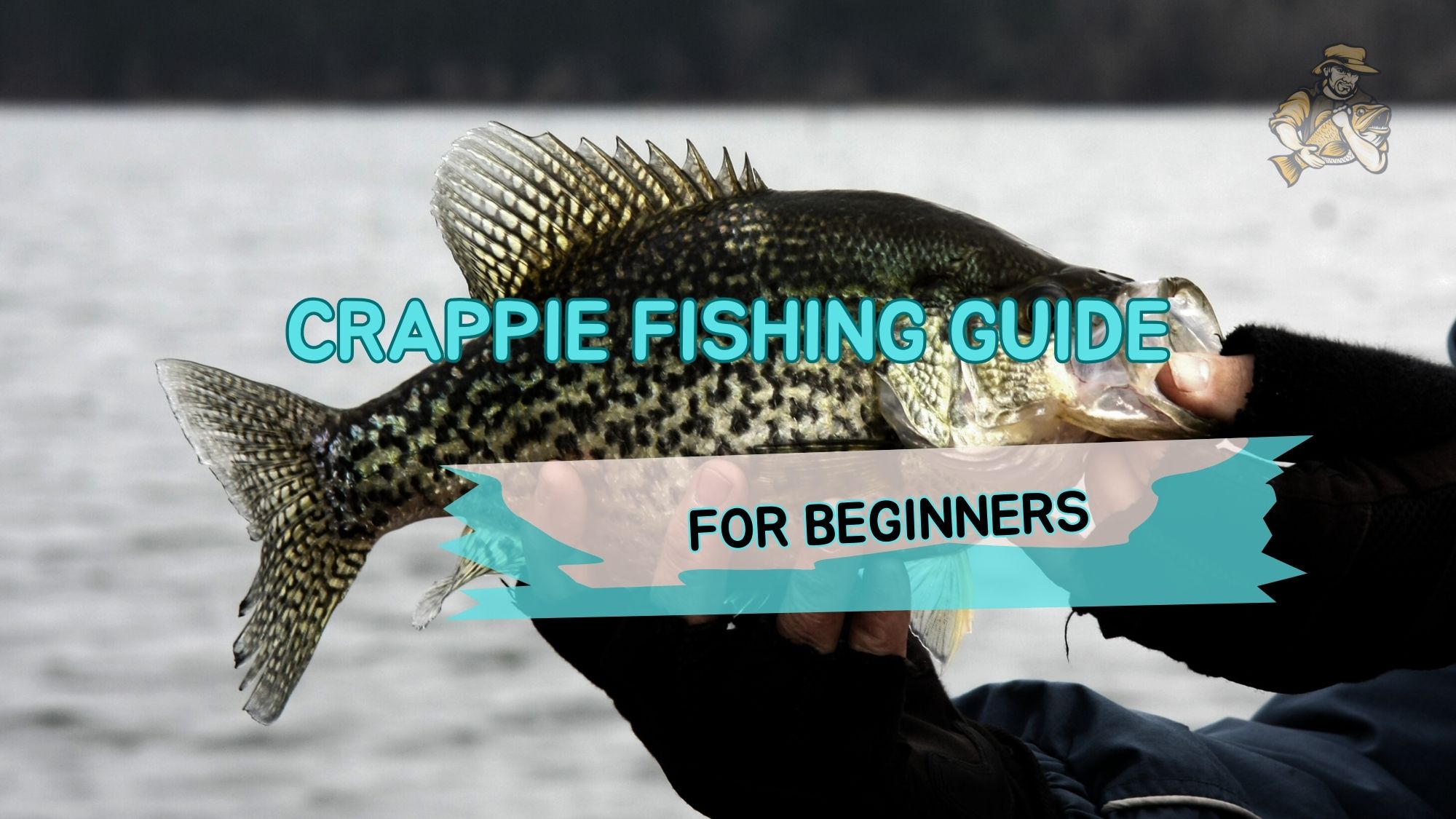
Crappie fishing might just be one of the most rewarding experiences for new anglers. These popular panfish are abundant, delicious, and put up a surprisingly good fight for their size. When I first started targeting crappie about 20 years ago, I made plenty of mistakes that left me wondering why these “easy-to-catch” fish seemed so elusive. Through years of trial and error (and plenty of slow days on the water), I’ve learned that catching crappie consistently isn’t complicated – but it does require understanding a few key principles.
In this guide, I’ll walk you through everything you need to know to start catching crappie regularly, even if you’ve never targeted them before. From basic gear recommendations to seasonal patterns and techniques, consider this your roadmap to crappie fishing success.
What Are Crappie and Why Target Them?
Crappie (pronounced “croppy”) are popular freshwater panfish found throughout North America. There are two main species: black crappie and white crappie. While they have some differences in appearance and habitat preferences, the fishing techniques for both are largely similar.
What makes crappie such great targets for beginners?
First, they’re abundant in most lakes, reservoirs, and many rivers across the country. Up here in Michigan, we have healthy populations in most of our larger inland lakes, though they don’t get quite as big as the slabs down south.
Second, crappie travel in schools, so when you find one, you’ve usually found many. Last spring, my son Tommy and I caught over 30 crappie in about an hour once we located a spawning bed near our favorite dock.
Third, they’re absolutely delicious. Many anglers (myself included) consider crappie to be among the best-tasting freshwater fish. Their white, flaky meat is mild and sweet, making them perfect for a fish fry.
Finally, you don’t need expensive gear or technical expertise to catch them – making them perfect for beginners and families.
Essential Crappie Fishing Gear
When I first started fishing for crappie, I overthought my gear choices and spent way too much money. Turns out, crappie fishing requires minimal specialized equipment to get started. Here’s what you’ll need:
Rod and Reel
For beginners, I recommend a light or ultra-light spinning combo between 5’6″ and 7′ in length. I’ve found that around 6’6″ provides the perfect balance of casting distance and sensitivity for most crappie situations.
My first dedicated crappie rod was actually a $30 combo I picked up at a local sporting goods store. While I’ve upgraded since then, that affordable setup caught hundreds of fish. You really don’t need to spend more than $50-75 on a starter combo that will serve you well for years.
Some features to look for:
- Light or ultra-light power
- Fast action (sensitive tip with backbone)
- Smooth reel with good drag system
- Comfortable grip
I’ve been using a Pflueger President reel paired with a 6’6″ light St. Croix rod for the past few years, but there are plenty of quality budget options from brands like Ugly Stik, Lew’s, and Shimano.
Fishing Line
Line choice can make a huge difference in your crappie success. I learned this lesson the hard way after losing several good fish using the wrong line.
For most crappie fishing situations, I recommend:
- 4-6 pound test monofilament or fluorocarbon
- Clear or low-visibility color
I personally prefer 4-pound fluorocarbon for most of my crappie fishing. It’s nearly invisible underwater and has less stretch than mono, which helps detect those sometimes-subtle crappie bites. That said, monofilament works perfectly fine for beginners and is more forgiving when fighting fish.
One notable exception: if you’re fishing heavy cover or specifically targeting trophy-sized crappie, you might want to bump up to 6 or even 8-pound test. When I fish the fallen trees along Lake Erie’s shoreline, I’ll often go with 6-pound test to handle the larger fish and give myself a chance at extracting them from the timber.
Lures and Baits
Crappie respond to a variety of presentations, but these three categories will cover most situations:
- Jigs – The absolute staple of crappie fishing. Small jigs in the 1/16 to 1/32 oz range with tube bodies, curly tails, or marabou are my go-to choices. I’ve had my best success with white, chartreuse, and black/chartreuse combinations, but don’t be afraid to experiment with colors.
- Live bait – Minnows are crappie candy, especially for bigger fish. A small minnow suspended under a bobber is probably the most consistent crappie-catching presentation ever devised. For the past 15 years, I’ve rarely gone crappie fishing without at least a small bucket of minnows as backup.
- Crappie-specific lures – Small spinners, micro-crankbaits, and soft plastics designed specifically for crappie can be devastatingly effective. I’ve had tremendous success with tiny Road Runner heads paired with small curly tail grubs.
A simple starter tackle selection might include:
- Assorted tube jigs in 1/16 and 1/32 oz sizes
- Small curly tail grubs in white, chartreuse, and black
- A package of small bobbers
- Light wire hooks (size 4 or 6) for minnows
- A few split shots for weight
My tackle box for crappie is honestly pretty basic even after all these years – I’ve found that having the right presentation matters far more than having dozens of options.
Accessories
A few other items that will make your crappie fishing more successful:
- Bobbers/floats – Both fixed and slip bobbers have their place in crappie fishing
- Small needle-nose pliers – For hook removal
- Line clippers – For retying and trimming line
- Bucket or small cooler – For keeping minnows alive or storing your catch
- Fish finder (optional) – Helpful but not essential for locating schools
I struggled for years finding crappie consistently until I finally invested in an inexpensive fish finder. While certainly not necessary for beginners, it transformed my approach once I learned to use it properly.
Finding Crappie: Location Basics
Finding crappie is often the biggest challenge for beginners. These fish move based on season, weather, and available food, making them seem mysterious at times. Here’s how to locate them throughout the year:
Spring (Spawning Season)
Spring is prime time for crappie fishing, particularly during the spawn. Once water temperatures reach about 55-65 degrees, crappie move into shallow water to spawn.
Look for:
- Protected shallow bays and coves
- Areas with gravel or sandy bottoms
- Submerged brush, fallen trees, or other cover in 1-6 feet of water
- Docks and piers near spawning areas
I had one of my best crappie fishing days ever last spring when Tommy and I found a massive spawning bed near a fallen tree in about 3 feet of water. We caught fish on nearly every cast for over an hour using simple white tube jigs. The water was so clear we could actually see the fish striking our lures.
Summer
As temperatures rise, crappie typically move to deeper water but will feed in shallower areas during early morning and evening.
Look for:
- Deeper brush piles in 10-20 feet
- Submerged timber
- Creek channels and drop-offs
- Suspended schools near deep-water structure
Summer crappie fishing requires more patience. I remember spending a frustrating July day years ago casting around shallow docks with zero success, only to later discover the fish were holding in 15 feet of water around brush piles. Once I found them, the action was non-stop.
Fall
Fall brings cooling temperatures and hungry crappie preparing for winter. They often school tightly and feed aggressively.
Look for:
- Creek channels and deeper coves
- Submerged structure in 8-15 feet
- Areas where baitfish are present
- Brush piles and timber
Fall can produce some incredible crappie fishing. Last October, Finn (my black lab) and I were out for an evening lake session when we stumbled upon a massive school feeding on shad near a creek channel. The action was so fast I could barely get my jig back in the water between catches.
Winter
Winter crappie fishing can be challenging but rewarding, especially in southern states or through the ice in northern regions.
Look for:
- The deepest parts of the lake or reservoir
- Tight schools in deep water structure
- Areas with less dramatic temperature fluctuations
I don’t do as much winter crappie fishing these days, but I remember a particularly successful ice fishing trip on Lake St. Clair where we located a school in 22 feet of water using small tungsten jigs tipped with waxworms. The bite was subtle but consistent once we dialed in the presentation.
Basic Crappie Fishing Techniques
Now that we’ve covered gear and locations, let’s talk about how to actually catch these fish. Here are the fundamental techniques every crappie angler should master:
Bobber Fishing
This is perhaps the simplest and most effective method, especially for beginners. Here’s how to do it:
- Tie on a small hook (size 4-6)
- Add a split shot about 6-12 inches above the hook
- Attach a bobber 1-3 feet above the split shot (depth depends on where fish are holding)
- Bait with a minnow or small jig
- Cast to likely holding areas and wait for the bobber to dip, dart, or disappear
Bobber fishing was how I caught my first crappie as a kid, and it remains effective decades later. The visual aspect of seeing the bobber go under makes it exciting and accessible for anglers of all ages.
Vertical Jigging
When crappie are holding around specific structure or you’ve located a school on your fish finder, vertical jigging is deadly effective:
- Position your boat directly over the structure or fish
- Drop your jig straight down
- Raise and lower your rod tip with subtle movements
- Watch your line for subtle twitches indicating a bite
I spent a whole summer learning to vertical jig effectively, and it transformed my success rate. The key was learning to detect those notoriously light crappie bites, which often feel like nothing more than a slight heaviness in the line.
Cast and Retrieve
For covering water and locating active fish:
- Cast small jigs, spinners, or crankbaits near likely structure
- Vary your retrieve speed and action
- Pay attention to what triggers strikes
- Once you find active fish, slow down and work the area thoroughly
This run-and-gun approach is my go-to method when exploring new water. I’ll tie on a 1/16 oz jig with a chartreuse curly tail and cast around likely areas until I get a bite, then focus on that area more thoroughly.
Dock Shooting
This specialized technique is perfect for skipping jigs under docks and overhanging cover:
- Hold the jig in one hand
- Pull back the rod like a bow and arrow, keeping the line taut
- Release the jig while simultaneously releasing the line
- The jig should shoot forward in a low trajectory, skipping under the cover
I was terrible at dock shooting for years until an old-timer at our local lake showed me the proper technique. Now it’s one of my favorite methods for reaching crappie hiding under docks and other cover that most anglers can’t reach.
Seasonal Crappie Strategies
Different seasons require different approaches. Here’s a breakdown of seasonal strategies that have proven successful for me:
Spring Strategy
Spring is all about the spawn. Focus on shallow areas, particularly north-facing banks that warm up faster in northern states (south-facing in southern states).
I typically start with a minnow under a bobber set at about 2-3 feet. Cast near visible cover like brush piles, fallen trees, or dock posts. If the fish are aggressive, switching to a jig can allow for faster fishing and more catches.
One spring trick I’ve learned: crappie beds often form in the same locations year after year. I keep a log of productive spawning areas and return to them each spring with consistent success.
Summer Strategy
Summer requires more patience and precision. As water temperatures rise, crappie move deeper but still relate to structure.
I focus on deeper brush piles, creek channels, and thermoclines where cooler water creates comfortable conditions. Early mornings and evenings can also produce shallow feeding activity.
My favorite summer technique involves using my fish finder to locate schools around brush piles, then vertical jigging with a light jig tipped with a minnow. The combination of flash and natural bait seems to trigger strikes even from less active fish.
Fall Strategy
Fall crappie often school tightly and feed aggressively as they prepare for winter. Focus on creek channels, deeper coves, and areas where baitfish are present.
I’ve had great success in fall using slightly larger jigs (1/8 oz) with more aggressive retrieves. The fish seem more willing to chase during this time, especially when they’re schooling and competing for food.
One particularly productive fall pattern I’ve found is targeting brush piles near creek channels in the afternoon hours. The crappie stack up in these areas and often bite readily once located.
Winter Strategy
Winter crappie fishing, whether through ice or in open water, is typically a deep water game. Fish move slower and often suspend at specific depths.
For ice fishing, I’ve had my best success using small tungsten jigs tipped with waxworms or spikes, worked very slowly with subtle movements. In open water, similar slow presentations with micro jigs around deep structure produce best.
The key to winter success is slowing everything down – smaller baits, more subtle movements, and much more patience between bites.
Tips for Catching More and Bigger Crappie
After decades of chasing these speckled beauties, I’ve picked up some tricks that consistently help me put more slabs in the boat:
1. Fish Smaller Than You Think
Many beginners use lures that are too large. Crappie have relatively small mouths, so downsizing your presentations often results in more bites. I rarely use jigs heavier than 1/16 oz, and in clear water or pressured lakes, I’ll go as small as 1/32 oz.
2. Master Light Bite Detection
Crappie are notorious for their subtle bites. Learning to detect these light takes will dramatically increase your hookup rate. Watch your line for slight movements, feel for the faintest “tick,” and set the hook at the first sign of anything unusual.
I missed countless fish my first few years because I was waiting for that definitive “thump” that rarely comes with crappie.
3. Follow Seasonal Patterns
Understanding the seasonal movements of crappie is perhaps the biggest key to consistent success. What works in spring won’t necessarily work in summer or fall. Adapt your approach based on water temperature and time of year.
4. Use Live Sonar If Available
If you have access to modern electronics, they can be game-changers for crappie fishing. Even a basic fish finder can help locate schools and structure that hold fish.
I resisted buying electronics for years, thinking it was “cheating” somehow. When I finally invested in even a basic unit, my catch rates doubled almost immediately simply because I was no longer fishing unproductive water.
5. Experiment with Colors
Crappie can be picky about colors on any given day. My rule of thumb:
- Clear water: natural colors (white, silver, smoke)
- Stained water: chartreuse, yellow, orange
- Muddy water: black, blue, hot pink
I always start with white in new waters, as it’s consistently produced across different conditions for me.
6. Fish During Prime Feeding Times
Crappie tend to feed most actively during these periods:
- Dawn and dusk
- Overcast days
- After a slight warming trend
- During stable weather patterns
Some of my biggest crappie have come during that magic hour just before sunset, especially in summer when they move shallower to feed.
Common Crappie Fishing Mistakes to Avoid
Over the years, I’ve made pretty much every mistake possible when it comes to crappie fishing. Here are some common pitfalls to avoid:
Fishing Too Fast
Crappie aren’t typically aggressive chasers like bass. Slow down your presentation, especially in cold water. I can’t count how many times I’ve caught fish by forcing myself to fish much slower than feels natural.
Staying in One Spot Too Long
If you’re not getting bites after 15-20 minutes, move to another location. Crappie school tightly, so if you’re not on fish, you need to keep searching until you find them.
Using Line That’s Too Heavy
Heavy line reduces the action of your lures and is more visible to fish. Unless you’re fishing extremely heavy cover, stick with 4-6 pound test.
Overlooking Shallow Water
Even outside the spawn, crappie will move shallow during low light conditions. Many anglers fish exclusively deep and miss these shallow feeding opportunities. I used to make this mistake religiously until a chance evening fishing trip showed me just how shallow crappie will move to feed at dusk.
Not Paying Attention to Weather Changes
Crappie are sensitive to weather fronts. Stable weather typically produces better fishing than the day after a major front moves through. Some of my worst days on the water have come after significant cold fronts.
Crappie Conservation and Regulations
While crappie are abundant in many waters, practicing good conservation ensures quality fishing for the future:
- Know and follow your local crappie regulations (size limits, bag limits)
- Consider practicing catch and release for larger spawning females
- Handle fish carefully to minimize stress
- If keeping fish for the table, take only what you’ll use
Here in Michigan, we’re fortunate to have healthy crappie populations in most of our waters, but I’ve still noticed certain lakes getting pressured during peak spawning season. I’ve personally started releasing all fish over 12 inches to protect the prime spawners, keeping only medium-sized fish for occasional meals.
FAQ: Common Crappie Fishing Questions
What’s the difference between black and white crappie?
Black crappie have irregular black splotches across their bodies and typically 7-8 dorsal spines, while white crappie have more regular vertical bars and usually 5-6 dorsal spines. Black crappie generally prefer clearer water with more vegetation, while white crappie are more tolerant of stained water. I’ve found that my black crappie identification guide helps beginners tell the difference, which can be useful since habitat preferences sometimes differ.
What’s the best time of year to catch crappie?
Spring, particularly during the spawn (water temperatures 55-65°F), is generally considered prime time. However, fall can offer excellent fishing as well when crappie school up to feed. I’ve had some incredible days in October when the water starts cooling and fish group up tightly. The seasonal crappie movement patterns I’ve observed over 20+ years suggest that any season can be productive if you understand where to look.
How deep should I fish for crappie?
Depth varies dramatically by season, time of day, and water conditions. During spawn, crappie might be in 1-5 feet. Summer might find them 15-25 feet deep during day but shallower at dawn/dusk. Always start where structure meets a depth change.
What size crappie is considered a “slab”?
This varies by region, but generally, a 12-inch crappie is considered excellent in most waters, with 14+ inches being trophy-class. In the southern states, 15-16 inch fish are possible, while in northern waters like here in Michigan, a 13-inch crappie is something special. I’ve only caught a handful of crappie over 15 inches in my lifetime, all from small, overlooked lakes with minimal fishing pressure.
What’s the best live bait for crappie?
Small to medium-sized minnows (1-2 inches) are the gold standard. Crappie will also readily take waxworms, red wigglers, and small leeches, depending on the season. I’ve experimented with various live bait effectiveness comparisons over the years and found that while minnows are generally best, there are times when insects outperform them, particularly in early spring.
Can you catch crappie from shore?
Absolutely! Focus on fishing docks, piers, fallen trees, or any structure accessible from shore. Dawn and dusk are particularly productive for shore anglers. Some of my biggest crappie have come while shore fishing, particularly during the spawn when they move into shallow, accessible areas. The key is finding structure that extends from shore into deeper water.
Conclusion
Crappie fishing offers an accessible, rewarding experience for anglers of all skill levels. Their widespread abundance, willingness to bite, and excellent table fare make them perfect targets for beginners and seasoned fishermen alike.
Remember, the fundamentals of crappie fishing are relatively simple: light tackle, small lures, and fishing around structure at the appropriate depth for the season. Master these basics, and you’ll be well on your way to consistent crappie success.
As with all fishing, the journey of learning is part of the fun. Each time on the water teaches you something new if you’re paying attention. I’m still learning new crappie patterns and techniques after three decades of pursuing these fish.
I hope this guide helps you experience the joy of feeling that distinctive tap-tap-tap of a crappie taking your jig and the excitement of reeling in these beautiful fish. Get out there, be patient, and enjoy the process – the crappie will come.

Meet Adam Hawthorne
I’m a lifelong fishing enthusiast who’s spent years exploring rivers, lakes, and oceans with a rod in hand. At Fishing Titan, I share hands-on tips, honest gear reviews, and everything I’ve learned about fish and ocean life, so you can fish smarter and enjoy every cast.
Share:

Meet Adam Hawthorne
I’m a lifelong fishing enthusiast who’s spent years exploring rivers, lakes, and oceans with a rod in hand. At Fishing Titan, I share hands-on tips, honest gear reviews, and everything I’ve learned about fish and ocean life, so you can fish smarter and enjoy every cast.
Related Articles
-
Oscar Fish
The Oscar Fish (*Astronotus ocellatus*) stands as one of South America’s most recognizable freshwater cichlids, earning widespread recognition both in its native Amazon Basin and…
-
Brown Bullhead
The Brown Bullhead (Ameiurus nebulosus) represents one of North America’s most widespread and ecologically significant freshwater catfish species. This robust bottom-dwelling fish plays a crucial…
-
Deep Water Fishing Mastery: 7 Proven Strategies
When surface waters turn quiet and shoreline spots fail to produce, the answer often lies in the depths. Deep water fishing opens up a whole…
-
New York Fishing License: Costs, Types & Where to Buy in 2025
Figuring out fishing licenses can be a headache, especially when you’re just eager to get out on the water. Over my years of fishing throughout…
Fish Species
-
Blacktip Shark
The Blacktip Shark (Carcharhinus limbatus) stands as one of the most recognizable and ecologically significant predators in tropical and subtropical waters worldwide. Distinguished by the…
-
Silky Shark
The Silky Shark represents one of the most widespread and ecologically significant requiem sharks in tropical and subtropical waters worldwide. Known scientifically as Carcharhinus falciformis,…
-
Basking Shark
The Basking Shark stands as one of the ocean’s most magnificent gentle giants, representing the second-largest fish species on Earth. Known scientifically as Cetorhinus maximus,…
-
Mosquito Fish
The Mosquito Fish (Gambusia affinis) stands as one of North America’s most ecologically significant freshwater species, despite its diminutive size. This small, hardy fish has…

